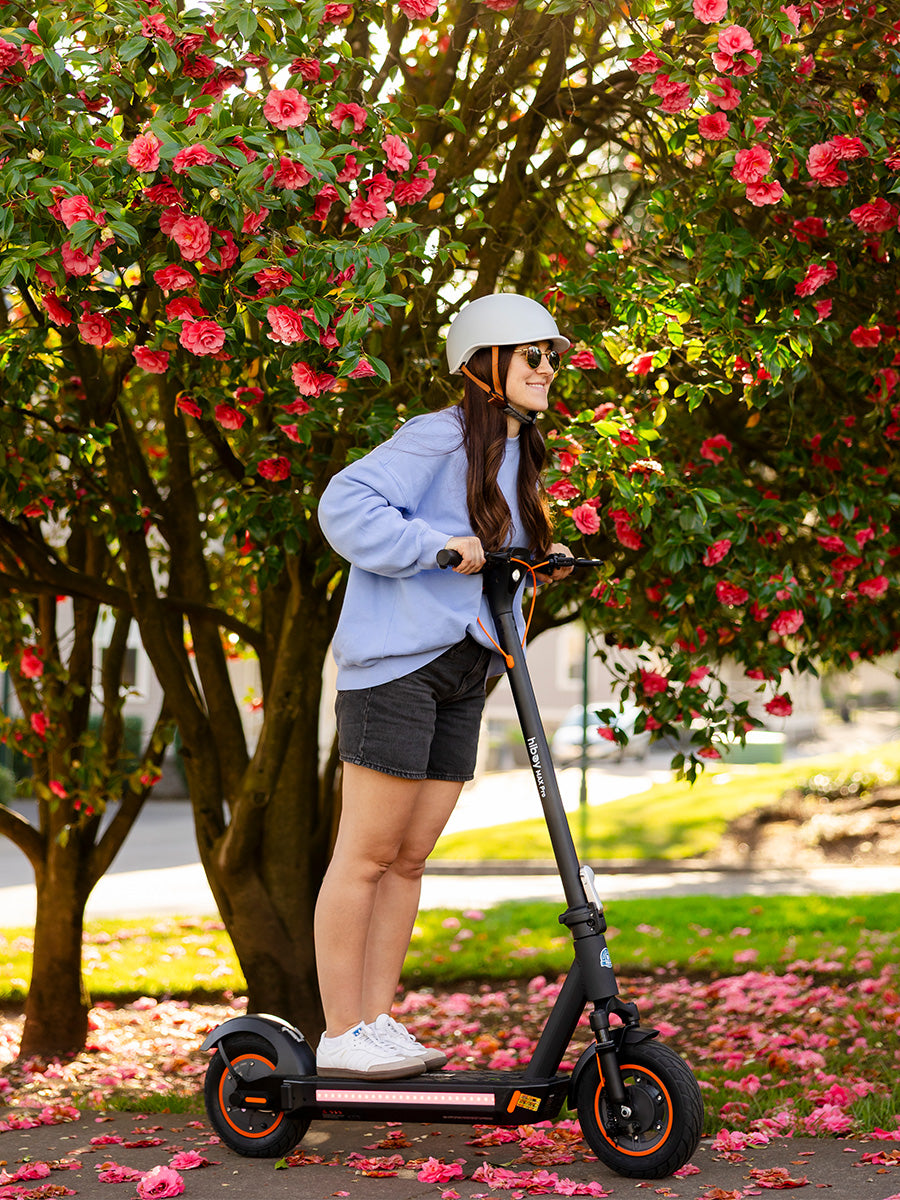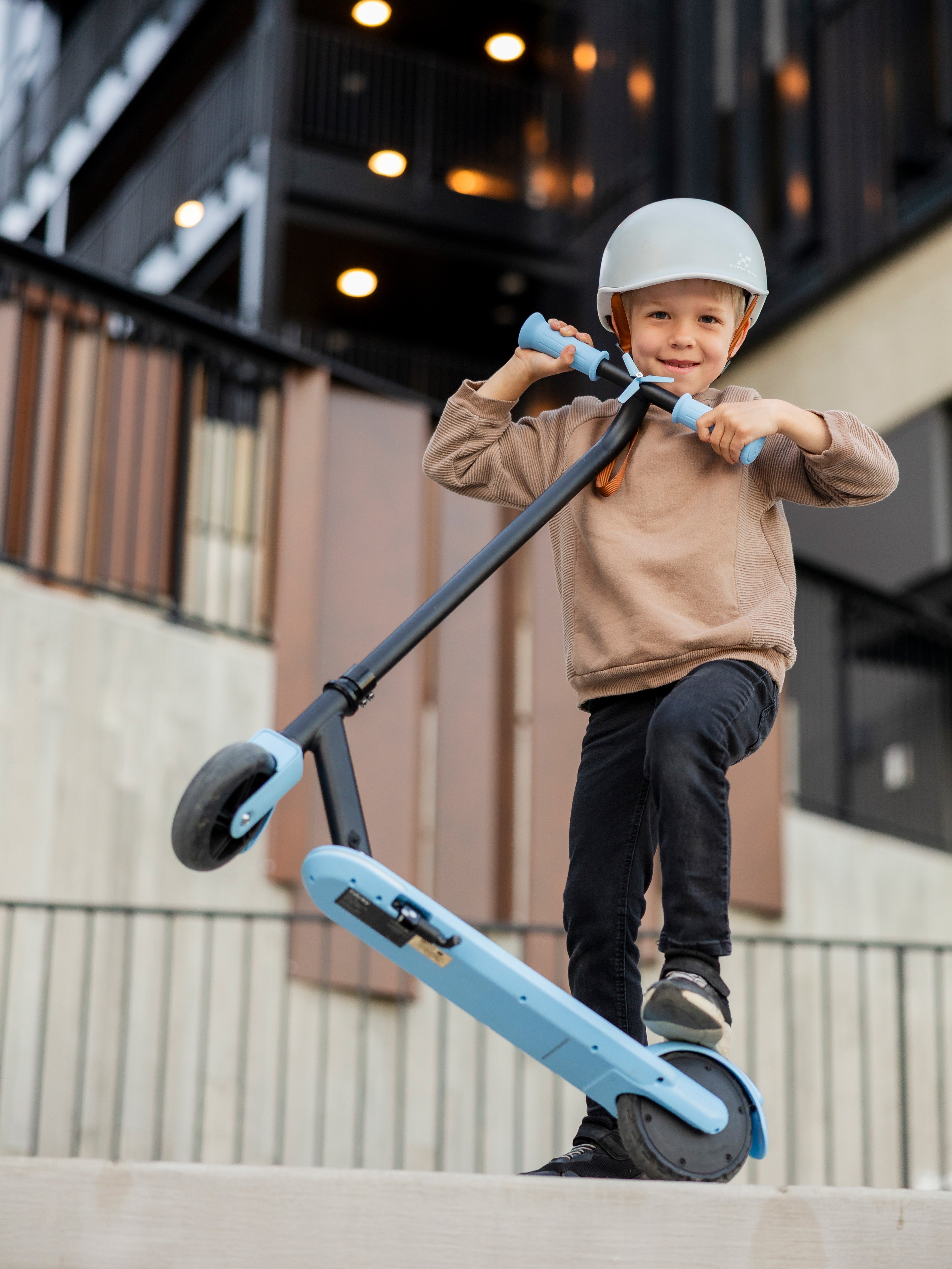Choosing between cycling vs running really comes down to what you want most from your exercise. Maybe you aim for a weight loss goal, better endurance, or stronger heart health. Many adults set weight loss, endurance, and health as top fitness goals. The American Heart Association suggests you get at least 150 minutes of exercise each week for your health and heart. Cycling and running both offer big benefits, but your personal needs, injury history, and what keeps you motivated matter most. Think about what feels right for you and what you can stick with long term.
Key Takeaways
-
Cycling is gentle on your joints and lets you exercise longer, while running burns more calories in less time and builds stronger bones.
-
Both cycling and running improve heart health, endurance, and help with weight loss, so choose the one that fits your body and goals best.
-
Running uses more muscles and offers full-body benefits, but cycling builds stronger leg muscles and reduces joint stress.
-
Cycling requires more equipment and planning, but running is easier to start anywhere with just good shoes.
-
Staying motivated matters most; pick the activity you enjoy and can keep doing regularly for lasting fitness success.
Cycling vs Running Overview

Key Differences
When you look at cycling vs running, you notice some big differences in how your body works during each exercise. Cycling uses a bike, so you sit and push pedals. Running means you move your whole body and hit the ground with each step. Both give you great cardio and fitness, but they feel very different.
Here’s a quick table to show how your muscles and energy work in each activity:
|
Aspect |
Running |
Cycling |
|---|---|---|
|
Muscle Engagement |
Uses more muscles, lots of stretch and recoil, stores and releases energy |
Focuses on legs (especially quads), steady muscle use, less stretch |
|
Muscle Fiber Type |
Mix of slow and fast twitch, depends on running style |
More slow twitch in legs, efficient at steady pace |
|
Energy Systems |
Mostly aerobic, but more anaerobic in short runs |
Mostly aerobic, steady energy use, less anaerobic |
|
Efficiency & Fatigue |
Uses elastic energy, can get tired faster |
Shares work across more muscles, less fatigue per muscle |
|
Joint Impact |
High impact, joints take more stress |
Low impact, easier on joints |
Tip: If you want the best form of cardio with less joint pain, cycling might be your pick. If you want to build bone strength and use more muscles, running could be better.
Pros and Cons
Both cycling and running have unique benefits and drawbacks. Here’s a simple table to help you compare:
|
Aspect |
Cycling |
Running |
|---|---|---|
|
Cardiovascular Health |
Great for heart health, low impact, good for beginners |
Boosts heart health, raises VO2 max, may lower disease risk |
|
Calorie Burn |
Burns fewer calories per minute, but you can go longer |
Burns more calories per minute, higher intensity |
|
Impact on Joints |
Low impact, safer for joints |
High impact, more stress on joints |
|
Muscle Strength |
Builds leg muscles, especially quads |
Builds muscle and bone, full body use |
|
Accessibility & Cost |
Needs a bike and gear, higher cost |
Just need shoes, cheaper to start |
|
Weight Loss |
Good for longer workouts, gentle on joints |
May help lose more weight, but higher injury risk |
Many people switch from running to cycling to protect their joints or recover from injury. Others choose running for stronger bones or because it feels simple and free. Some even mix both for better endurance and overall health. No matter what you pick, both offer big benefits for your fitness and cardio goals.
Cycling vs Running for Weight Loss
Calorie Burn
When you look at cycling vs running, you probably want to know which one burns more calories. The answer depends on how hard you work, your body weight, and even the terrain. Running usually burns more calories per minute because it uses more muscles and your body has to support its own weight. Cycling is easier on your joints, so you can often keep going longer, which means you can still burn a lot of calories in one workout.
Here’s a table to help you see what affects calories burned in both activities:
|
Factor |
Influence on Calories Burned Between Running and Cycling |
|---|---|
|
Speed/Intensity |
Higher speeds and intensities increase calories burned in both; running generally burns more per minute. |
|
Terrain |
Hills or rough ground make both cycling and running harder, so you burn more calories. |
|
Body Weight |
Heavier people burn more calories, especially when running, because you move your whole body. |
|
Fitness Level |
More muscle means you burn more calories during and after exercise. |
|
Muscle Mass |
Muscle burns more calories, even when you rest. |
|
Fat Percentage |
More fat can lower your resting calorie burn, but exercise helps change that. |
|
Environmental |
Wind and altitude make both activities harder, so you burn more calories. |
|
Cycling Specific |
Pedal speed, how hard you push, and wind resistance all affect calories burned on the bike. |
If you run at a moderate pace, you might burn about 10-13 calories per minute. Cycling at a steady pace usually burns 7-10 calories per minute. But here’s the trick: you can often cycle for a much longer time than you can run, especially if you’re just starting out or have a weight loss goal. That means your total calories burned in a cycling session can match or even beat a shorter run.
Tip: If you want to burn the most calories in the shortest time, running is usually the winner. If you want a longer, joint-friendly workout, cycling lets you keep going and rack up calories burned over time.
Fat Loss
Now, let’s talk about cycling vs running for fat loss. You might wonder which is better for losing body fat, especially belly fat. Both cycling and running help you lose fat by burning calories and creating a calorie deficit. But studies show some differences.
Check out this table from a big review of clinical trials:
|
Activity |
Fat Mass Reduction (kg) |
Body Fat % Reduction (%) |
Fat-Free Mass Change (kg) |
|---|---|---|---|
|
Overground Running |
-4.25 |
-2.80 |
N/A |
|
Cycling |
-1.72 |
Less than running |
+0.63 (muscle gain) |
|
Treadmill Running |
-1.10 (not significant) |
Not significant |
N/A |
Running leads to more fat loss and a bigger drop in body fat percentage than cycling. If your main weight loss goal is to lose as much fat as possible, running might be your best bet. But cycling still helps you lose fat and has a special bonus: it can help you gain muscle in your legs. More muscle means you burn more calories even when you’re not working out.
What about belly fat? Both cycling and running help reduce it, but running seems to have a slight edge, especially with high-intensity workouts. In one study, people who did running intervals lost about 16% of their abdominal fat, while those who cycled lost about 8%. Both groups lost total body fat and visceral fat, but running worked a bit faster for belly fat.
Here’s a quick list to help you decide which is better for your weight loss goals:
-
Cycling is low-impact, so it’s great if you have joint pain or want longer workouts.
-
Running burns more calories per minute and helps you lose fat faster, including belly fat.
-
Both activities help you reach your weight loss goal by burning calories and boosting your metabolism.
-
Cycling builds leg muscle, which helps you burn more calories even at rest.
-
Running is intense and may not be right for everyone, especially if you have injuries.
So, which is better? If you want fast results and can handle the impact, running is usually more effective for fat loss. If you want a workout that’s easier on your joints and still helps you burn plenty of calories, cycling is a smart choice. The best option is the one you enjoy and can stick with for the long run. Both cycling and running can help you reach your fitness and weight loss goals.
Cycling vs Running for Endurance
Long-Term Stamina
If you want to build real stamina, you might wonder which is better: cycling or running. Both can help you go farther and last longer, but they work in different ways. When you look at cycling vs running for endurance, you see that cycling has a big advantage for long sessions. You can ride a bike for hours without feeling as much pain in your joints. This makes cycling a favorite for people who want to train for a long time or cover big distances.
Cycling is easier on your body because it is a low-impact exercise. Your legs push the pedals, but your feet do not hit the ground over and over. This means you can train more often and for longer periods. Many cyclists spend 7 to 8 hours a week on their bikes. Runners, on the other hand, usually train about 5 to 6 hours a week. Running puts more stress on your muscles and joints, so you need more time to recover. If you want to build stamina without risking injury, cycling might be your best choice.
Running still builds strong endurance, but you may need to watch out for soreness or overuse injuries. You use more muscles when you run, and your body has to support its own weight. This makes running a great way to boost your cardio and burn calories, but it can be tough to keep up long sessions, especially if you are new to exercise.
Tip: If you want to train for a long time and avoid joint pain, cycling is a smart pick. If you love the feeling of pushing your limits and want to build strong bones, running can help you reach your goals.
Training Approaches
When you compare cycling vs running for stamina, you will notice that both sports use different training methods to build endurance. You can use steady, long workouts or mix in intervals to get better results. The best plan depends on your body and what you enjoy.
Here are some popular training approaches for both cycling and running:
-
Long, slow distance workouts help you build a strong base. These sessions teach your body to use oxygen better and burn fat for energy. Cyclists often do long rides at a steady pace to increase endurance. Runners do the same with long runs, but they may need more rest between sessions.
-
High-intensity interval training (HIIT) is a powerful way to boost your endurance and VO2 max. Studies show that HIIT can improve your fitness faster than just doing long, slow workouts. For example, doing short bursts of hard effort with rest in between can raise your VO2 max by up to 46% in six months. This works for both cycling and running.
-
Sprint intervals with longer recovery times can give you even bigger gains in VO2 max. Coaches suggest doing sets like 6x3-minute hard efforts with 4-minute rests. You can do these on a bike or while running.
-
Strength training also helps you get better at both sports. Lifting heavy weights with fewer reps can make your muscles more efficient. This means you use less oxygen for the same effort, which is great for endurance. Runners and cyclists both see benefits from adding strength work to their routine.
-
Mixing different types of workouts keeps your training fresh and helps you avoid burnout. Try combining long, easy sessions with intervals and strength training for the best results.
Here is a quick table to show how cycling vs running training can look each week:
|
Training Type |
Cycling (per week) |
Running (per week) |
|---|---|---|
|
Total Training Time |
7–8 hours |
5–6 hours |
|
Long Endurance |
2–3 rides (1–3 hours each) |
1–2 runs (1–2 hours each) |
|
HIIT/Intervals |
1–2 sessions |
1–2 sessions |
|
Strength Training |
1–2 sessions |
1–2 sessions |
|
Recovery |
More frequent, shorter |
Longer, more needed |
When you look at cycling vs running for endurance, you see that cycling lets you train more often and for longer periods. Running gives you a strong cardio boost and helps you get ready for races, but you need to be careful with your recovery. Both sports can help you reach your fitness goals if you use the right training plan.
Note: Consistency is the key. Whether you choose cycling or running, sticking to your training schedule will help you build lasting stamina and reach your endurance goals.
Cycling vs Running for Heart Health
Cardiovascular Benefits
When you think about your heart, both cycling and running give you strong support. These exercises make your heart work harder, which helps it get stronger over time. Cycling is a low-impact exercise, so you can keep your heart rate up for longer without hurting your joints. This makes cycling a great choice if you want to protect your knees or if you have arthritis. You can ride for a long time, burn calories, and still feel good the next day.
Running, on the other hand, pushes your heart rate higher in a shorter time. You use more muscles, and your body works hard to keep up. This means you burn more calories per minute. If you want a quick, intense workout, running is a solid pick. Both cycling and running help lower your blood pressure, reduce bad cholesterol, and keep your heart healthy.
A big study from the University of Glasgow found that people who cycle often have a much lower risk of heart disease. Cycling can lower your risk of heart disease by almost half and even cut your risk of dying from heart problems by over 50%. These are huge benefits of cycling. You also get less stress, a stronger heart muscle, and better blood flow. Cycling benefits your health in many ways, making it a smart choice for long-term heart care.
Tip: If you want to keep your heart healthy for years, pick an exercise you enjoy and can stick with. Both cycling and running offer real health benefits.
Risk Reduction
You might wonder which activity does a better job at lowering your risk of heart disease. Studies show that both cycling and running protect your heart, but they work a little differently.
-
Running is linked to a big drop in heart disease and death from heart problems. Even short runs, like 5-10 minutes a day, can lower your risk by over 40%. If you keep running over time, you get even more benefits.
-
Cycling also helps, but most people in studies do not cycle as much or as hard as they run. This makes it harder to see just how strong the effect is. Still, regular cycling lowers your risk of heart disease, especially if you ride often and keep up the pace.
-
Both exercises improve your cardiorespiratory fitness. This means your heart and lungs work better, which helps you live longer and stay healthier.
-
If everyone who does not run started running, experts think we could prevent up to 25% of deaths from heart disease.
When you look at cycling vs running for heart health, you see that both are powerful tools. Running may give you faster results, but cycling is easier on your body and lets you train longer. The best choice is the one you enjoy and can keep doing. Your heart will thank you for any regular exercise you choose.
Muscle and Strength
Leg Muscle Building
When you look at cycling vs running for muscle building, you notice some big differences in how your legs work. Cycling puts steady resistance on your legs, especially your quads, hamstrings, and calves. You push against the pedals over and over, which helps you build muscle mass in your lower body. If you ride often or use higher gears, your legs get even stronger.
Electromyography studies show that cycling activates muscles like the tibialis anterior, vastus lateralis, and rectus femoris. These muscles help you control your foot and knee movement. If you switch from cycling to running, your muscles need to adjust. Sometimes, your legs feel tired or awkward because the muscle activation patterns change. This is common for triathletes who do both sports. Training your neuromuscular control can help you avoid injury and improve your performance.
Running also works your legs, but in a different way. You use your hamstrings, calves, and glutes to push off the ground. Your muscles stretch and contract quickly with each step. This helps you build strength, but not as much muscle size as cycling. If you want bigger leg muscles, cycling gives you more of that benefit.
Tip: If you want to focus on leg muscle growth, try adding resistance or hill climbs to your cycling routine.
Total Body Engagement
When you compare cycling vs running for muscle building, you see that running uses more of your whole body. Running is a weight-bearing exercise. You support your entire body weight with every step. This means you use your core, arms, and even your back to keep your balance and move forward. Studies show that runners have higher bone mineral density, especially in the spine, because running puts stress on your bones and muscles.
Cycling mostly targets your legs, but you can still work your upper body if you ride standing up or use indoor cycling classes with weights. However, cycling does not use as many total body muscles as running. If you want full-body strength, running gives you more of that benefit. If you want to focus on your legs and avoid high impact, cycling is a great choice.
Here’s a quick table to show the difference:
|
Activity |
Main Muscles Worked |
Total Body Engagement |
Bone Strength Benefit |
|---|---|---|---|
|
Cycling |
Quads, hamstrings, calves |
Lower body focus |
Lower |
|
Running |
Legs, core, arms, back |
Full body |
Higher |
Both cycling and running offer unique benefits for muscle and strength. You can choose the one that matches your goals and enjoy the rewards of a stronger, healthier body.
Joint Impact and Injury
Joint Stress
You might wonder how much stress your joints take during cycling or running. The answer can help you pick the right activity for your body. Cycling is known for being gentle on your knees and hips. When you ride a bike, your legs move in a smooth, circular motion. This movement puts less force on your joints compared to running. You sit on the bike, so your body weight does not press down on your knees and hips as much.
Running feels different. Each step you take sends a shock up through your legs. Your knees and hips absorb this impact every time your foot hits the ground. Over time, this can lead to more joint pain or stiffness, especially if you run on hard surfaces. People with joint problems often find cycling easier and less painful. Some studies even show that cycling can help reduce joint pain and keep your joints moving well. If you want to protect your joints and still get a good workout, cycling is a smart choice.
Tip: If you have sore knees or hips, try cycling for a while. You may notice less pain and better movement.
Injury Risk
Both cycling and running come with some risk of injury, but the types of injuries you might face are not the same. Here’s a quick look at the most common injuries in cycling:
|
Injury Type |
Description / Incidence Details |
|---|---|
|
Superficial Skin Injuries |
Scrapes, cuts, and bruises are the most common, making up 40-60% of cycling injuries. |
|
Fractures |
Broken bones, especially the collarbone, happen in 6-15% of cases. |
|
Overuse Injuries |
Knee pain is common, like patellofemoral pain syndrome and iliotibial band issues. |
|
Head Injuries |
Head trauma, including concussions, makes up 2-15% of injuries. |
|
Injury Incidence Rates |
Injury rates vary a lot, from 3.23 to 116 per 1,000 people, depending on age, skill, and where you ride. |
When you look at running, you see a different pattern. Runners often deal with overuse injuries, especially in the knees, shins, and feet. These injuries come from the repeated impact of each step. Muscle soreness and inflammation are also more common after hard runs. If you run a lot or push too hard, you might face a higher risk of knee injuries than if you cycle.
Cycling usually leads to fewer joint injuries, but crashes can cause cuts or broken bones. Running puts more load on your joints, which can lead to pain or injury over time. If you want to lower your risk, listen to your body and rest when you need it. Both activities can help your health, but picking the right one for your joints keeps you moving strong.
Cost and Accessibility
Equipment Needs
When you start a new activity, you probably want to know how much it will cost. Cycling usually needs more gear than running. You need a bike, a helmet, and sometimes special clothes or shoes. Bikes can be expensive, and you also have to think about repairs and maintenance. Here’s a table to show some common cycling costs:
|
Service Type |
Cost Range (USD) |
Description |
|---|---|---|
|
Minor fixes |
$5 - $10 |
Puncture repair, tire inflation |
|
Median service |
Around $60 |
Basic tune-ups, brake and gear adjustments |
|
Full overhaul |
Up to $350 |
Deep cleaning, parts replacement |
|
Bike fitting |
$100 - $200 |
Adjusts bike for comfort and efficiency |
You might spend $200 a year for basic bike care, but high-performance bikes can cost $500 or more each year to keep in top shape. If you do your own repairs, you can save money. Running is much simpler. You only need a good pair of shoes and maybe some comfortable clothes. Most people spend less on running gear, and you do not have to worry about repairs.
Tip: If you want to keep costs low, running is the easiest way to start. Cycling costs more at first and over time, but it can be worth it if you love riding.
Convenience
You want your workout to fit your life. Running is easy to start almost anywhere. You can step outside your door and go. In cities, you find sidewalks, parks, and trails close by. Urban areas often have more places for both cycling and running, like bike lanes and greenways. In rural places, it can be harder. There are fewer sidewalks and bike paths, so you may need to travel to find a safe spot.
-
Urban neighborhoods have more parks, trails, and recreation centers within walking distance.
-
Rural areas often lack sidewalks and have fewer places for safe exercise.
-
Cycling networks are better in cities, but some regions invest in rural bike paths to help people ride more.
-
If you live in the country, you might depend on a car to reach a good running or cycling route.
Weather also changes how easy it is to stay active. Cold or rainy days make cycling harder, especially if you do not have the right gear. Running keeps better participation in bad weather, since you can dress for the cold and still get outside. Many people switch to indoor workouts or use a gym when the weather gets rough.
Note: If you want the most flexible option, running wins for convenience. Cycling can be just as easy if you have safe roads or trails nearby, but it takes more planning.
Personal Fit
Suitability
Choosing between cycling and running depends on your body, your health, and what feels right for you. Not everyone has the same needs or risks. Some people find cycling easier on their joints, while others love the simple act of running. You should think about your age, health conditions, and even the weather when picking your main activity.
Here are some things that can affect how suitable cycling is for you:
-
Older adults face a higher risk of serious medical events during long cycling sessions.
-
Women may have a greater chance of fluid and electrolyte problems while cycling.
-
Slower cycling speeds can lead to more illness-related issues.
-
Hot and humid weather increases the risk of getting sick during cycling.
If you have joint pain or want a low-impact workout, cycling might be a better fit. Running gives you a quick way to boost your heart health and build bone strength, but it puts more stress on your knees and hips. Always listen to your body and talk to your doctor if you have health concerns.
Motivation
Staying motivated is key to reaching your fitness goals. You might wonder which activity helps you stick with your routine longer. People who choose cycling as their main sport often train more days each week and spend more time exercising. Many cyclists enjoy the thrill of competition and setting new goals. They also tend to keep up their training over time.
Here’s a quick look at how cyclists and runners compare:
|
Aspect |
Cyclists |
Runners |
|---|---|---|
|
Training frequency |
Most train 3 days/week |
|
|
Competition participation |
Often >10 times/season |
Mostly 1–5 times/season |
|
Weekly training duration |
About 119 minutes/week |
About 68 minutes/week |
|
Motivation profiles |
Goal achievement, competition |
Autonomy, mood, health |
Both cycling and running offer big mental health benefits. When you cycle, your body releases endorphins that help you feel good and reduce stress. Riding outside can calm your mind and boost your mood. Running also triggers feel-good chemicals, helps you sleep better, and can make you feel less lonely. Both activities help you handle stress and improve your confidence.
Tip: Pick the activity that excites you and fits your lifestyle. The best workout is the one you enjoy and want to do again tomorrow.
Quick Comparison Table
You want a quick way to see how cycling and running stack up for your fitness goals. This table gives you a side-by-side look at the most important features. You can use it to decide which activity fits your needs best.
|
Feature |
Cycling |
Running |
|---|---|---|
|
Calorie Burn |
Moderate per minute, high over long sessions |
High per minute, shorter sessions |
|
Joint Impact |
Low, gentle on knees and hips |
High, more stress on joints |
|
Muscle Focus |
Legs (quads, hamstrings, calves) |
Full body, legs, core, arms |
|
Bone Strength |
Low benefit |
High benefit |
|
Equipment Needed |
Bike, helmet, gear |
Shoes, comfortable clothes |
|
Cost |
Higher (bike, maintenance) |
Lower (mainly shoes) |
|
Accessibility |
Needs safe roads or trails |
Can run almost anywhere |
|
Injury Risk |
Fewer joint injuries, risk of falls/crashes |
More overuse injuries (knees, shins) |
|
Endurance Training |
Long, low-impact sessions possible |
Builds stamina, but needs more recovery |
|
Motivation |
Group rides, races, scenery |
Quick start, races, mood boost |
Tip: If you want to track your progress like a pro, cycling offers special tools. You can use metrics such as Training Stress Score (TSS), Intensity Factor (IF), and Rate of Perceived Exertion (RPE). These help you measure how hard you work, how tired you feel, and how much you improve over time. Runners often use RPE and pace, but cycling gives you more detailed numbers.
Here are some cycling metrics you might see:
-
Training Stress Score (TSS): Shows how tough your ride was by combining how hard and how long you rode.
-
Intensity Factor (IF): Tells you how hard you pushed compared to your best effort.
-
Rate of Perceived Exertion (RPE): Lets you rate how hard the workout felt, from 0 (easy) to 10 (max effort).
-
Functional Threshold Power (FTP): The highest power you can keep up for about an hour.
-
Normalized Power (NP): Shows the real effort of your ride, even if your speed changed a lot.
You can use this table and these tips to pick the activity that matches your goals and keeps you moving forward. 🚴♂️🏃♀️
When you look at cycling vs running, both help your heart, boost endurance, and support weight loss. Cycling is gentle on your joints and lets you go longer, while running burns more calories in less time. Which is better? It depends on your goals and what feels good for your body. Try both if you can! Here’s a quick checklist to help you decide:
-
Choose shoes that fit well.
-
Drink water before and after workouts.
-
Set clear goals for cycling or running.
-
Wear comfy clothes.
-
Make it fun and stick with it!
FAQ
Can I combine cycling and running in my fitness routine?
Absolutely! Mixing both can keep things fun and help you avoid boredom. You work different muscles and lower your risk of overuse injuries. Try cycling on some days and running on others for a balanced workout.
Which burns more calories: cycling or running?
Running usually burns more calories per minute. Cycling lets you go longer, so you can still burn a lot. If you want quick calorie burn, choose running. For longer, joint-friendly sessions, cycling works great.
Is cycling better for bad knees?
Yes, cycling is easier on your knees. You sit while you ride, so your joints take less impact. If you have knee pain or past injuries, cycling often feels more comfortable than running.
How do I stay motivated to keep exercising?
Set small goals and track your progress. Join a group or invite a friend. Change your routes or try new challenges. Remember, the best workout is the one you enjoy and want to do again!
Do I need special gear to start cycling or running?
For running, you just need good shoes and comfy clothes. Cycling needs a bike, helmet, and maybe padded shorts. Start simple and add gear as you go. Safety always comes first!






 S2
S2
 KS4 Pro
KS4 Pro
 MAX Pro
MAX Pro

 S2 Lite
S2 Lite

 Light-Weight & Portable
Light-Weight & Portable
 Long Range
Long Range
 For Heavy Riders
For Heavy Riders
 Big Wheel
Big Wheel
 With Seat
With Seat
 Fast
Fast




 EX6
EX6
 P6
P6
 C1
C1

 DK1
DK1
 BK1
BK1

 Q2 Lite-A
Q2 Lite-A
 U2 Lite
U2 Lite










1 comment
Stark Fitness Studio
I read the blog post and it was really helpful. The way it was written was also enjoyable to read. Keep it up and please share more content. Cheers!
Leave a comment
All comments are moderated before being published.
This site is protected by hCaptcha and the hCaptcha Privacy Policy and Terms of Service apply.